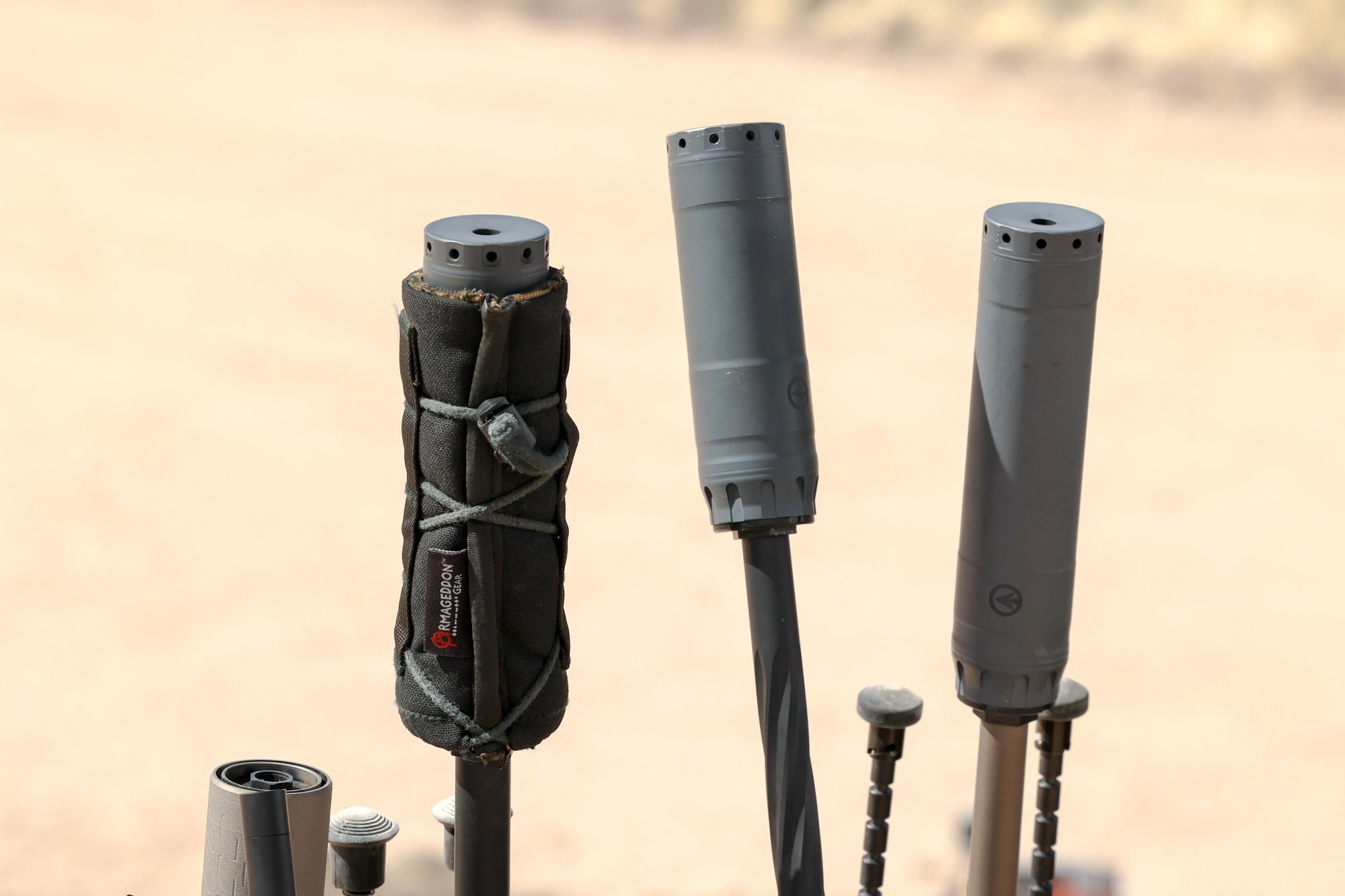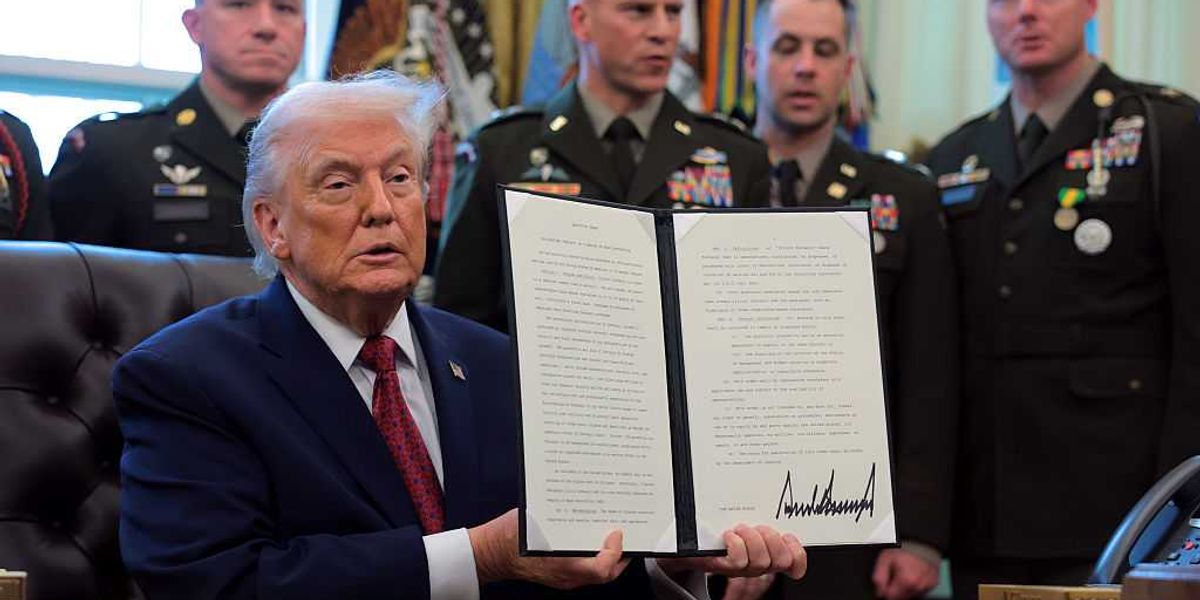Chairman of the Joint Chiefs of Staff General Dan “Razin” Caine publicly detailed the classified development, testing, and recent combat deployment of the GBU-57 “Massive Ordnance Penetrator” during a briefing this week, shedding light on a years-long U.S. effort to neutralize a deeply buried Iranian nuclear weapons facility.
The weapon was used in Operation Midnight Hammer, a strike carried out in June 2025, targeting what the U.S. government identified as a covert underground nuclear facility in Iran.
According to Caine, the success of that mission was the culmination of more than 15 years of work by a small group of specialists at the Defense Threat Reduction Agency (DTRA), the Pentagon’s lead agency for countering underground weapons threats.
Trump’s Sovereign Wealth Fund: What Could It Mean For Your Money?
“Let me next move to a walk through of the GBU 57 massive ordinance penetrator weapon and share a little bit about the planners who did this and their work on the weapon,” Caine began.
“First, let me set the stage for you. There’s an organization in the US called the Defense Threat Reduction Agency, Ditra. Ditra does a lot of things for our nation, but Ditra is the world’s leading expert on deeply buried underground targets.”
According to Caine, the origin of the GBU-57’s development dates back to 2009, when a DTRA officer was briefed on classified intelligence regarding a large underground construction site in the mountains of Iran.
“In 2009 a Defense Threat Reduction Agency officer was brought into a vault at an undisclosed location and briefed on something going on in Iran,” Caine said.
“He was shown some photos and some highly classified intelligence of what looked like a major construction project in the mountains of Iran. He was tasked to study this facility, work with the intelligence community to understand it, and he was soon joined by an additional teammate.”
This Could Be the Most Important Video Gun Owners Watch All Year
That officer and his teammate, Caine explained, spent the next 15 years studying every detail of the facility.
“He studied the geology. He watched the Iranians dig it out. He watched the construction, the weather, the discard material, the geology, the construction materials, where the materials came from. He looked at the vent shaft, the exhaust shaft, the electrical systems, the environmental control systems, every nook, every crater, every piece of equipment going in and every piece of equipment going out.”
“They literally dreamed about this target at night when they slept, they thought about it driving back and forth to work,” Caine continued.
“And they knew from the very first days what this was for. You do not build a multi layered underground bunker complex with centrifuges and other equipment in a mountain for any peaceful purpose.”
Realizing early on that the United States did not possess a weapon capable of destroying such a target, the team collaborated with military tacticians and defense industry engineers to begin developing what would become the GBU-57.
“They began a journey to work with industry and other tacticians to develop the GBU 57,” Caine said.
“They tested it over and over again, tried different options, tried more after that. They accomplished hundreds of test shots and dropped many full scale weapons against extremely realistic targets for a single purpose: kill this target at the time and place of our nation’s choosing.”
That order came in June 2025, when the President of the United States authorized a B-2 bomber strike using the GBU-57 against the underground site in Iran.
“And then, on a day in June of 2025, more than 15 years after they started their life’s work, the phone rang and the President of the United States ordered the B-2 force that you’ve supported to go strike and kill this target,” Caine said.
He added that he met with the two officers behind the effort just days after the mission.
“Yesterday, I had the incredible honor and privilege of spending time with these two Defense Threat Reduction Agency officers who’ve given so much,” Caine said.
“One of them said, quote, ‘I can’t even get my head around this. My heart is so filled with the pride of being a part of this team. I am so honored to be a part of this.’ To you both, thank you and thank you to your families.”
Caine concluded by crediting the many service members who enabled the strike, stating: “Operation Midnight Hammer was the culmination of those 15 years of incredible work — the air crews, the tanker crews, the weapons crews that built the weapons, the load crews that loaded it.”
WATCH:
MUST WATCH: Gen. Dan “Razin” Caine, Chairman of the Joint Chiefs of Staff, shares the 15+ years of meticulous planning and studying that went into obliterating the Iranian regime’s nuclear facilities pic.twitter.com/e7Rf7atVZ0
— Rapid Response 47 (@RapidResponse47) June 26, 2025
Connect with Vetted Off-Duty Cops to Instantly Fulfill Your Security Needs
Read the full article here


![Staggering Amount of Time That Went Into Iran Strike Revealed by Gen. Dan ‘Razin’ Caine [WATCH] Staggering Amount of Time That Went Into Iran Strike Revealed by Gen. Dan ‘Razin’ Caine [WATCH]](https://www.lifezette.com/wp-content/uploads/2025/06/2025.06.22-08.29-lifezette-6857bf077a33e.jpg)




![Pentagon Escalates Investigation Into ‘Seditious Six’ Dem Sen. Mark Kelly [WATCH] Pentagon Escalates Investigation Into ‘Seditious Six’ Dem Sen. Mark Kelly [WATCH]](https://www.lifezette.com/wp-content/uploads/2025/12/2025.12.02-10.02-lifezette-692eb950e7f1a.jpg)


![The Economy Will Boom in 2026 if Democrats Don’t Shut Down the Government Again: Bessent [WATCH] The Economy Will Boom in 2026 if Democrats Don’t Shut Down the Government Again: Bessent [WATCH]](https://www.lifezette.com/wp-content/uploads/2025/09/2025.09.02-11.19-lifezette-68b6d2ae2824d.jpg)

